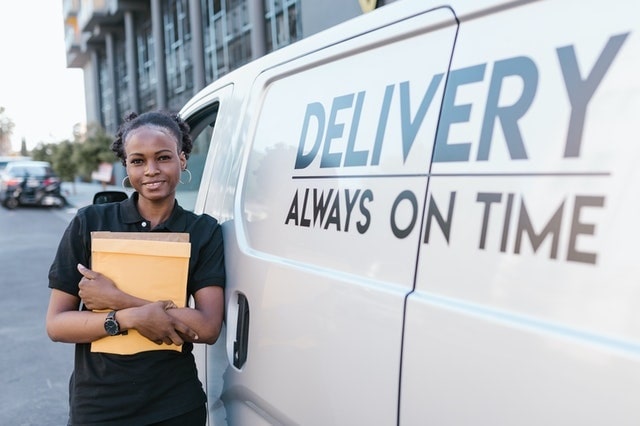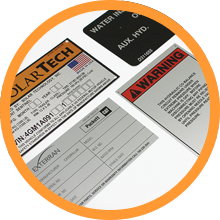The e-commerce industry has seen a dramatic shift in recent years toward more rapid customer deliveries. Amazon took the lead early on with 2-day shipping for Prime members, and the COVID-19 pandemic only accelerated demand for home delivery services. For third-party logistics providers (3PLs), this has presented some unique challenges for fulfillment and tracking.
Many logistics managers and fleet management professionals are now looking for additional ways to improve last-mile delivery, which is the movement of shipments from a distribution center to the customer. The final leg of a logistics loop is especially critical given the fact that customer delivery has become so important.
In this post, we’ll discuss six important trends that are shaping last-mile delivery and tracking in fleet management. Understanding these market needs can help when choosing technologies and service improvements for fleets of any size.
1. Outsourced Third-Party Delivery
Many businesses, especially in the foodservice industry, are contracting with 3PLs and social delivery networks such as Doordash, GrubHub, and Uber Eats. This move allows these companies to improve their core business without the need to hire their own delivery staff. A major push has also taken place among e-commerce businesses, with Amazon helping to create a large third-party carrier network for local delivery. In fact, according to DCL, Amazon is now the largest third-party logistics provider in the world.
For some fleet managers, this represents an opportunity to add additional capacity to support these local needs. In other cases, logistics managers have created hybrid networks with a combination of in-house fleet vehicles and third-party transportation. In order to properly manage deliveries with a high degree of transparency, these companies and their partners must align their electronic tracking systems.
2. Prioritization of Same Day Delivery
Customers are expecting faster delivery times, and this is unlikely to change in the near future. This trend has made a dramatic impact on last-mile delivery for some carriers as some companies are now offering same-day or next-day delivery. In order to keep up with the competition, other companies are following suit to maintain their market share. Such a fast turnaround requires careful coordination between retailers, warehouses, and logistics providers. Tracking data should be available through all important steps in the supply chain and logistics process from order entry to delivery.
3. Real-time Complete Delivery Data
Many consumers today have adopted more flexible work schedules and have unique delivery requirements. This situation has changed as a result of the COVID-19 pandemic, and it’s difficult to predict whether these changes will remain permanent. Last-mile tracking has become particularly important as customers would like to know exactly when their shipments will arrive. This is also important for warehouses and fulfillment centers that are receiving goods from carriers. A reliable schedule is necessary to ensure that work processes and resources can be planned effectively.
4. No Contact Delivery
Another major trend has been a rise in no contact delivery services. This not only helped protect people during the pandemic but has also become an efficient way to deliver packages in a secure manner. These services often require electronic proof of delivery (e-POD) to verify that the package is present. Carriers need to assess these technologies and make sure they have the right capabilities and mobile connectivity to allow for these verifications.
5. Smart Technology
Technology has advanced to the point of offering real-time location data for shipments. In addition to rating plates and nameplates that may be required for fleet vehicles and parts to manage fleet maintenance and ensure regulatory compliance, logistics providers are now using GPS devices, RFID tags, and barcode labels to improve the traceability of packages in their care. This helps reduce the likelihood of lost shipments and allows companies to use advanced analytics to better understand their workflows. Soon, IoT devices such as autonomous vehicles, robots, and drones may be able to complete last-mile delivery while providing additional data.
6. Omnichannel Fulfillment
Customers enjoy the convenience of receiving packages at a location of their choosing. This has led to the creation of omnichannel fulfillment offerings at many retail and e-commerce companies. Some examples include in-store pickup, curbside pickup, and other locations such as Amazon lockers. This has increased the number of potential delivery addresses associated with each order and requires a more agile delivery approach. As more urban fulfillment centers are built to bring products closer to consumers, this also creates an excellent opportunity for 3PL providers. Businesses must rely more heavily on the support and infrastructure of their partners to fulfill these orders.
The fleet management industry is quickly adapting to these emerging consumer preferences and taking advantage of new technologies to improve fulfillment. To remain competitive, these companies will need to work closely with their supply chain partners to align tracking technologies and shipment hand-offs. As customers become more used to receiving real-time updates and more accurate delivery times, the focus on last-mile tracking will only become more of a necessity.



